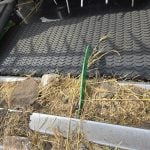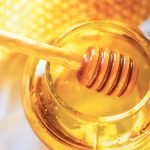
Stories by Robert Arnason

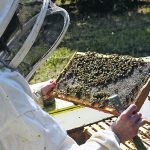
Honey production could be down 25 per cent
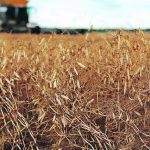
U.S. researchers confirm no-till, pulse benefits
U.S. Department of Agriculture study finds that a no-till wheat and pea rotation is the most environmentally sustainable
WINNIPEG — American scientists have confirmed what Canadian farmers already know — zero tillage is good for the environment and for crop production. U.S. Department of Agriculture researchers looked at the long-term effects of three cropping rotations in Montana — summer fallow-wheat, no-till continuous wheat and no-till wheat-pea. After crunching the data, they concluded that […] Read more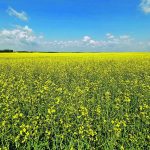
Poor yields start at the roots
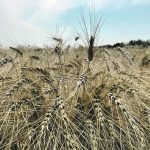
Canola-wheat yield difference widens this year
Producers wonder if canola breeders need to focus more on finding a solution to heat stress and its impact on yields
WINNIPEG — The yield gap between spring wheat and canola is substantial this fall in western Manitoba. In some instances, the gap is 30 bushels per acre. The Manitoba Agriculture crop report for Oct. 2 says the average spring wheat yield in the northwest region of the province is 65 to 70 bu. per acre. […] Read more
Burning weed seeds receives attention, but does it pay?
Research shows burning windrows may work in Australia or Arkansas, but not in Canada due to the Prairie climate
WINNIPEG — Farmers around the globe are running out of options to control weeds. Western Australian farmers are coping with annual ryegrass, growers in Arkansas have been fighting palmer amaranth and producers in Alberta and Saskatchewan are battling kochia. It’s become clear, to some experts, that applying herbicides and more herbicides isn’t the answer. Growers […] Read more
Pea protein sector goes to the dogs (and cats)
The human food side of the pea protein business continues to grow, but pet food remains the ingredient’s dominant user
WINNIPEG — In June, Louis Dreyfus Co. broke ground at its new pea protein plant in Yorkton, Sask. The processing plant could be completed by the fall of 2025 and may be operational in the spring of 2026. The new facility will add to an expanding supply of pea protein that is processed in Western […] Read more
University internship designed to show gamut of ag jobs
Ontario Agricultural College in Guelph has developed an internship course for graduate students in masters’ programs
WINNIPEG — Agricultural workers are getting old. The average Canadian farmer is in their late 50s, which is problematic, but the demographic challenge in agriculture is much bigger than grain, livestock and vegetable production. Companies that provide services and products to Canada’s ag industry have employees that are planning to retire soon. Those firms need […] Read more
Pulse ingredients boom, but competition looms
Industry official wonders if the expansion of pulse processing that has been seen in Western Canada is outpacing demand
WINNIPEG — Every year, food companies in the United States, the United Kingdom, Europe and Asia launch thousands of new products. Peas, lentils, pea protein and chickpea flour made from pulse crops grown in Western Canada are becoming common ingredients in those novel foods. In 2023, for instance, more than 1,200 products from around the […] Read more
Weeds have adapted but so have Canadian farmers: Bayer
The company says it is sharing information with producers on the value of using strategies to manage weed resistance
WINNIPEG — Bayer began its acquisition of Monsanto in 2016, and the takeover was finalized in 2018. With the transaction, Bayer became the rights holder of Roundup, which Monsanto commercialized in 1974. The patent on Roundup expired in 2000, allowing other companies to produce generic versions of glyphosate, the ingredient in Roundup that kills weeds. […] Read more



